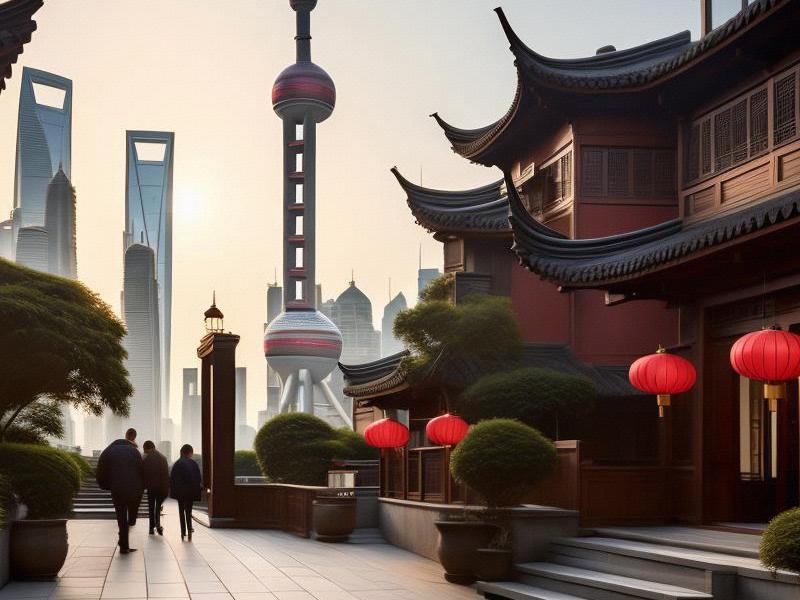Shanghai: A Dynamic Hub of Innovation and Culture
⏱ 2025-04-22 00:53 🔖 阿拉爱上海千花网
📢0℃

Shanghai, often referred to as the "Pearl of the Orient," stands as a beacon of modernity and tradition in China. As the largest city in the country, Shanghai is not only a significant economic powerhouse but also a cultural melting pot that attracts millions of visitors each year. This article aims to provide an in-depth look at the various facets of Shanghai, highlighting its innovative spirit, cultural vibrancy, and urban evolution.
Economic Powerhouse and Innovation Hub
Shanghai's economic prowess is well-documented, with its GDP consistently ranking among the highest in China. The city is home to the Shanghai Stock Exchange, one of the largest in Asia, and hosts numerous multinational corporations and financial institutions. However, Shanghai's economic success is not solely based on traditional industries; it has also become a global leader in innovation and technology.
The Zhangjiang Hi-Tech Park, often dubbed "China's Silicon Valley," is a prime example of Shanghai's commitment to fostering innovation. This park houses a vast array of high-tech companies, research institutions, and startups, attracting top talent from around the world. It has played a pivotal role in the development of sectors such as biotechnology, information technology, and new energy.
Moreover, Shanghai's government has implemented various initiatives to support innovation, including tax incentives for tech companies, funding for research and development, and the establishment of innovation clusters. These efforts have positioned Shanghai as a key player in the global tech landscape, rivaling cities like San Francisco and Singapore.
Cultural Melting Pot
爱上海同城对对碰交友论坛
Beyond its economic achievements, Shanghai is renowned for its rich cultural heritage and vibrant arts scene. The city is a blend of traditional Chinese culture and Western influences, reflecting its history as a major port and international trade center. This unique cultural tapestry is evident in the city's architecture, cuisine, and arts.
The Bund, a historic waterfront area, showcases Shanghai's colonial past with its iconic Art Deco buildings. Across the Huangpu River lies Pudong, a modern district that features skyscrapers like the Oriental Pearl Tower and the Shanghai Tower, symbolizing the city's rapid urban development. This juxtaposition of old and new is a defining characteristic of Shanghai.
Shanghai's culinary scene is equally diverse, offering a mix of traditional Shanghainese dishes and international flavors. From the famous xiaolongbao (soup dumplings) to modern fusion cuisine, the city's food culture reflects its cosmopolitan nature. Additionally, Shanghai is home to numerous museums, theaters, and art galleries, hosting exhibitions and performances that celebrate both local and global artists.
Urban Development and Sustainability
Shanghai's rapid urbanization has been nothing short of remarkable, with the city expanding its infrastructure and amenities to accommodate its growing population. The Maglev train, the world's fastest commercial high-speed train, connects Shanghai to nearby cities, showcasing the city's commitment to modern transportation.
上海喝茶服务vx
However, urban development in Shanghai is not without challenges. The city faces issues such as traffic congestion, air pollution, and housing shortages. To address these concerns, Shanghai has implemented various sustainable development initiatives. The city has been investing in green technologies, promoting public transportation, and enhancing urban planning to crteeaa more livable environment.
One notable example is the Lujiazui Financial District, which has incorporated green spaces and energy-efficient buildings into its design. Additionally, Shanghai has been actively promoting the use of electric vehicles and expanding its bike-sharing network to reduce carbon emissions.
Global Influence and Future Prospects
Shanghai's global influence extends beyond its economic and cultural achievements. The city has played a crucial role in international diplomacy, hosting numerous global summits and forums. The G20 Summit, held in Shanghai in 2001, was a significant milestone that highlighted the city's importance on the world stage.
Looking ahead, Shanghai continues to evolve and adapt to the changing global landscape. The city's government has outlined ambitious plans for the future, focusing on areas such as smart city development, digital transformation, and environmental sustainability. These initiatives aim to position Shanghai as a global leader in innovation and urban development.
上海品茶网
One of the key projects is the construction of the Hongqiao Integration Zone, which aims to integrate transportation, commerce, and logistics to enhance the city's connectivity. Additionally, Shanghai is investing heavily in artificial intelligence, big data, and other emerging technologies to drive economic growth and innovation.
Conclusion
Shanghai's journey from a small fishing village to a global metropolis is a story of resilience, adaptability, and ambition. The city's economic power, cultural vibrancy, and commitment to sustainable development make it a unique and influential hub in the world. As Shanghai continues to evolve, it remains a symbol of China's progress and a testament to the potential of urban centers in driving global change.
In conclusion, Shanghai's multifaceted identity as an economic powerhouse, cultural melting pot, and model of urban development offers valuable insights into the complexities of modern cities. Its innovative spirit, rich cultural heritage, and sustainable practices serve as a blueprint for other cities aspiring to achieve similar success. As we look to the future, Shanghai's story is one of endless possibilities and a reminder of the transformative power of urban centers in shaping the world.
Shanghai’s Gilded Lounges: Where Art Deco Opulence Meets AI-Curated ExtravaganceThe Great Shanghai Convergence: How the Mega-City Is Reshaping the Yangtze Delta Region"Code and Qipao: How Shanghai's Women Are Rewriting the Rules of Modern Femininity"The Yangtze River Delta Megaregion: Shanghai's Bold Vision for Integrated Urban Future《海派丽人启示录:上海女性审美变迁与都市文化演进》弄堂里的"新主人":上海城市更新中的社区共生与文化新生Shanghai's Nocturnal Revolution: How the City Redefines Luxury Entertainment《从"百乐门"到"数字包厢":解码上海娱乐会所的百年进化史》文章开始Shanghai's Beauty: A Blend of Tradition and ModernityShanghai 2045: The Living Laboratory of Urban Futurism

